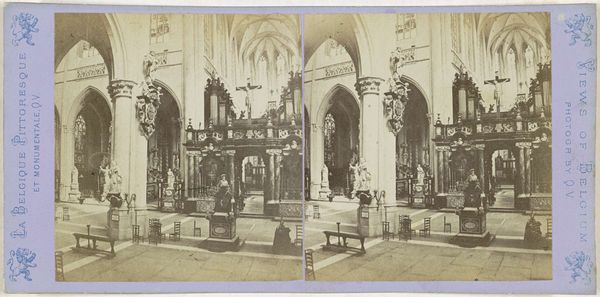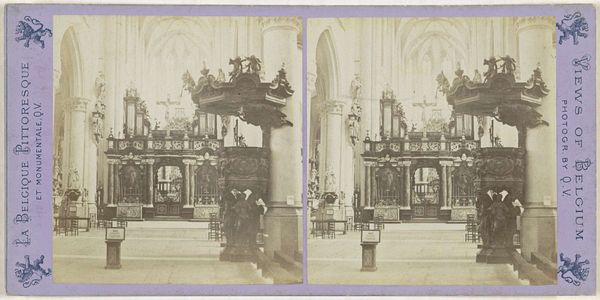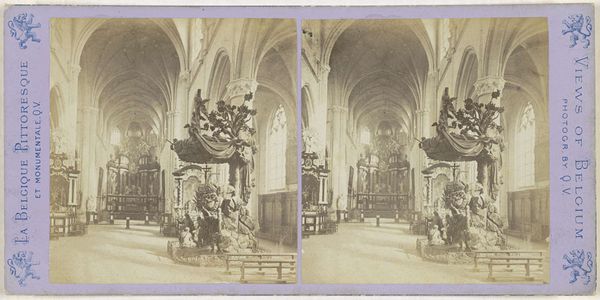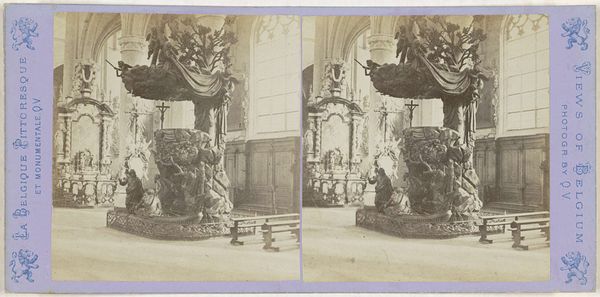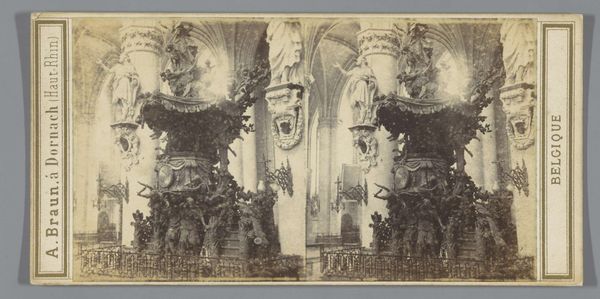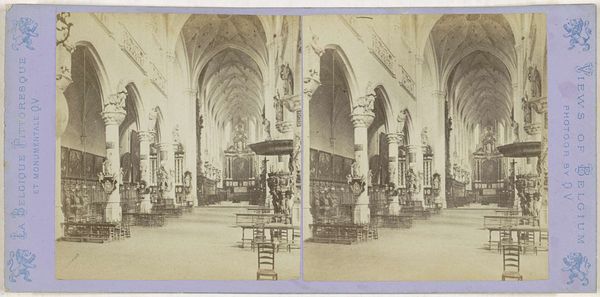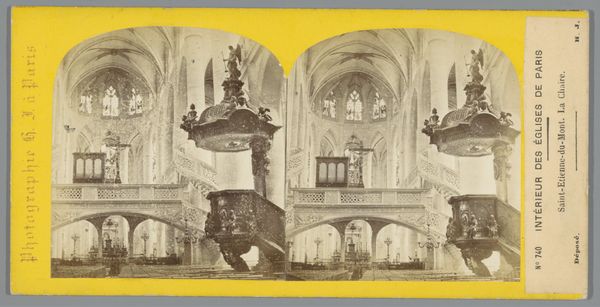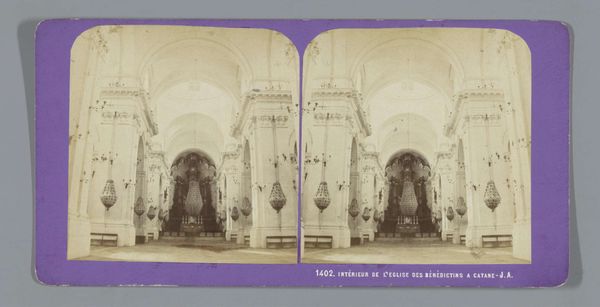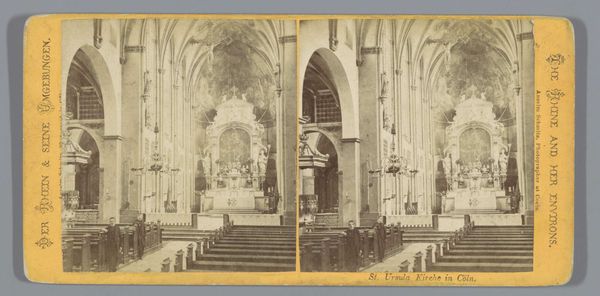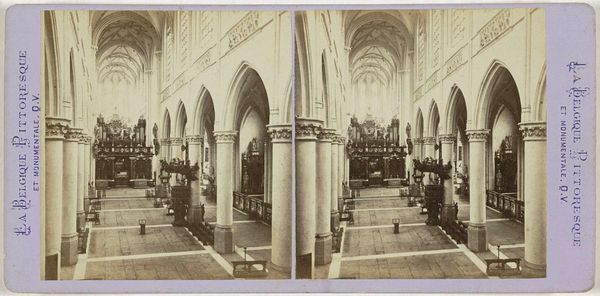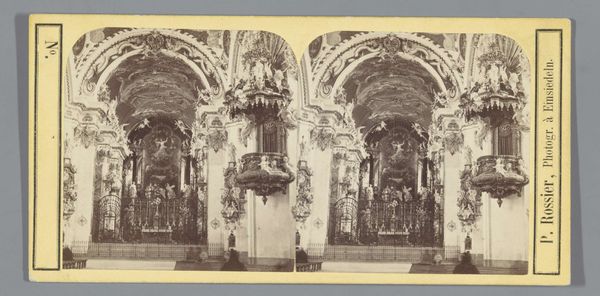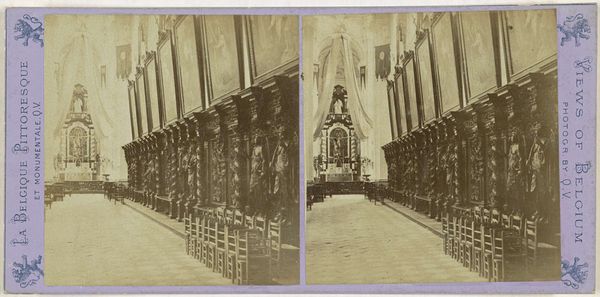
Naturalistische preekstoel van Hendrik Frans Verbruggen in de Kathedraal van Sint-Michiel en Sint-Goedele in Brussel 1866 - 1870
0:00
0:00
photography
#
landscape
#
photography
Dimensions: height 86 mm, width 175 mm
Copyright: Rijks Museum: Open Domain
Curator: This stereo photograph by Jules Hippolyte Quéval, taken between 1866 and 1870, depicts the Naturalistic pulpit by Hendrik Frans Verbruggen, inside the Cathedral of St. Michael and St. Gudula in Brussels. Editor: Immediately, I'm struck by how theatrical this is. Even in a photograph, you get the sense of carved surfaces upon surfaces—layer after layer. Curator: The choice of such an elaborate piece for photographic reproduction underscores the era's fascination with documenting monuments, reinforcing ideas about national and religious identity. It’s an image designed to circulate widely. Editor: Yes, but I can't help but wonder about the labour that went into this sculptural complexity. Considering the detailed foliage and figures, what material realities shaped the artisans' practices? Were they well compensated? Curator: That’s precisely where social context becomes crucial. Guild structures, patronage by the church—these factors deeply impacted artistic production. Editor: Still, framing the context in that way risks ignoring that pulpits such as that by Hendrik Frans Verbruggen become products too. How was that artwork initially circulated, received, and used by different social classes. Was it truly about spiritual enlightenment, or perhaps reinforcing religious ideologies through visual spectacle. Curator: It is the latter in this particular case; what appears initially "naturalistic" actually aligns seamlessly with baroque and late baroque ecclesiastical decor in the Brussels cathedral. Editor: Indeed, the naturalism is definitely ornamental, far from being in service of the population it is aimed at educating. Curator: Quite. Consider too the limitations and capabilities of the photographic process itself. Choices were made to showcase that very materiality and enhance its appeal, to speak about an ideal church rather than what the artist initially intended, using techniques that reflect both his technical skill and cultural priorities. Editor: Which gives us a layered narrative, as each element – the sculptor, the cathedral and the photographer adds context to the understanding of labour, value and the visual spectacle of late 19th-century art. Curator: A fantastic blend, certainly highlighting our roles in contextualizing this compelling imagery and historical production in Brussels, which this image helps bring back to the present.
Comments
No comments
Be the first to comment and join the conversation on the ultimate creative platform.
